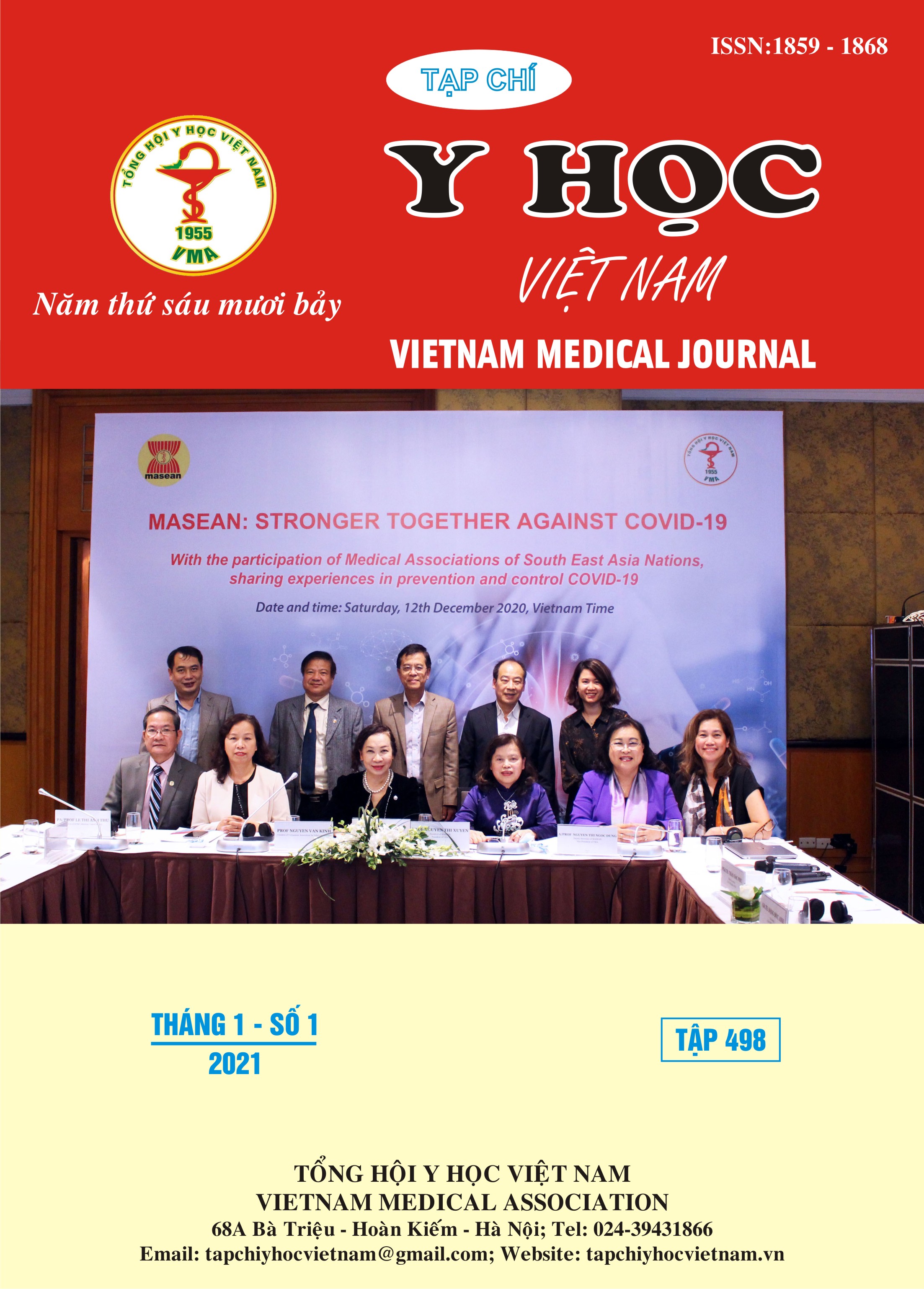CLINICAL, SUBCLINICAL CHARACTERISTICS ANH SOME FACTORS RELATE TO TREATMENT OUTCOME IN PATIENTS WITH SEPTIC SHOCK
Main Article Content
Abstract
Objective: Describe clinical, subclinical characteristics and analysis some factors relate to treatment outcome in patients with septic shock. Methods: The descriptive study cut across 47 patients in septic shock. Results: Average age of study subjects is 61,4±15,2. The highest age is 92 and the lowest one is 15. Male sex accounts for 76,6% higher rate, female only 23,4%. The majority of patients with septic shock have no fever or mild fever. High fever only accounted for 23,4%, while the proportion of patients without fever was the highest at 61.7%. Common primary sites of infection are respiratory and digestive organs, of which the respiratory tract accounts for 44,7%, and digestion is 34%. Bacterial culture results showed a positive result of only 17%. The mean blood lactate value of patients with septic shock was 6,82 ± 4,16. The majority of patients with blood lactate values > 6 mmol/l accounts for 51,1%. There was a statistically significant association with a 95% confidence between coagulation disorder, invasive mechanical ventilation and treatment outcome in patients with septic shock. Conclusion: Older patients are at higher risk of septic shock, with higher rates of infection than women. The most common primary infection drive is the respiratory organs, with a low positive blood culture. There was a statistically significant association with a 95% confidence between coagulation disorder, invasive mechanical ventilation and treatment outcome in patients with septic shock.
Article Details
Keywords
Clinical, subclinical, factor relate, septic shock.
References
2. Chertoff J. CM, Garcia B., et al (2015). Lactate kinetics in sepsis and septic shock: a review of the literature and rationale for further research. J Intensive Care, 3(39), 1–4, pp.
3. Vũ Hải Yến (2012). Nghiên cứu đặc điểm lâm sàng- cận lâm sàng và kết quả của liệu pháp điều trị sớm theo mục tiêu ở bệnh nhân sốc nhiễm khuẩn. Luận văn thạc sỹ y học, Trường Đại học Y Hà Nội. Tr 34-55.
4. Phạm Quốc Dũng LTVH, Nguyễn Mạnh Dũng (2019), "Đặc điểm lâm sàng, cận lâm sàng và nồng độ một số cytokine ở bệnh nhân sốc nhiễm khuẩn", Tạp chí Y Dược lâm sàng 108. Tập 14 - số 4, pp.
5. Phạm Tuấn Đức (2011). Đánh giá thay đổi vận chuyển ôxy và tiêu thụ ôxy trên bệnh nhân sốc nhiễm khuẩn. Luận văn thạc sỹ y học TĐ, pp.
6. Trần Minh Điển (2010). Nghiên cứu kết quả điều trị và một số yếu tố tiên lượng tử vong trong sốc nhiễm khuẩn trẻ em. Luận án tiến sỹ Y học. Trường Đại học Y Hà Nội. Tr 55-87
7. Tseng YC. WJ, Wu FLL. et al. (2007), "Prognosis of adult patients with bacteremia caused by extensively resistant Acinetobacter baumannii", Diagnostic Microbiology and Infectious Disease, 59, pp.181-190, pp.
8. Mai Văn Cường (2011). Nghiên cứu sự liên quan giữa áp lực tĩnh mạch trung tâm và áp lực mao mạch phổi bít ở bệnh nhân sốc nhiễm khuẩn và sốc tim. Luận văn tốt nghiệp bác sĩ nội trú bệnh viện. Trường Đại học Y Hà Nội. Tr 29-53.
9. Vincent JL SY, Sprung CL, Ranieri VM, Reinhart K, Gerlach H, Moreno R, Carlet J, Le Gall JR, Payen D (2006). Sepsis Occurrence in Acutely Ill Patients Investigators. Sepsis in European intensive care units: results of the SOAP study. Crit Care Med. 34:344-53, pp.


